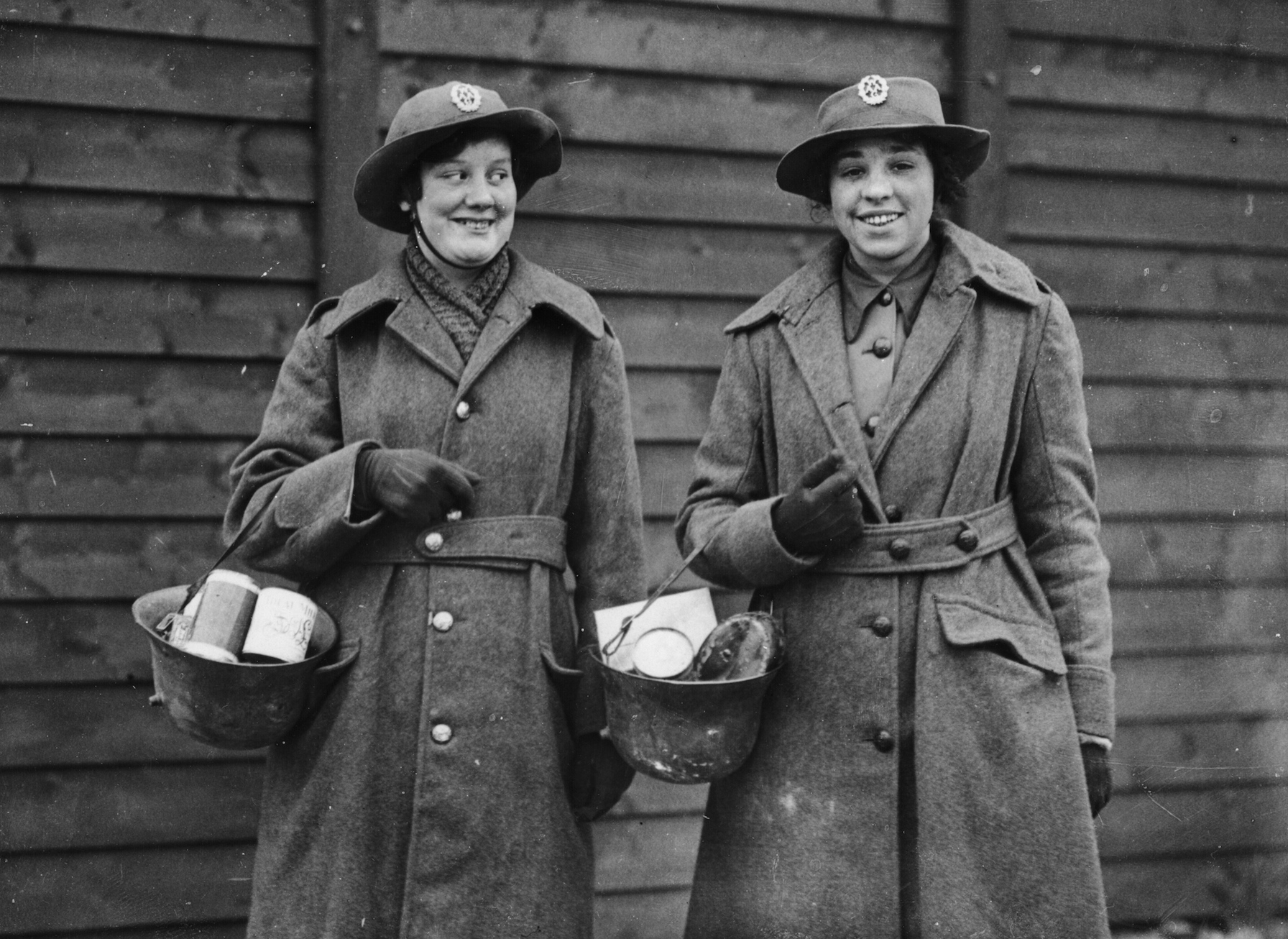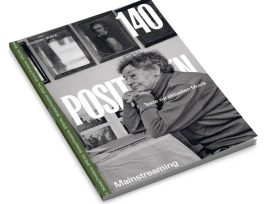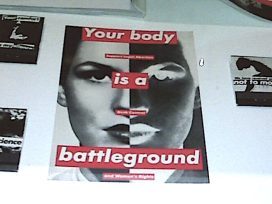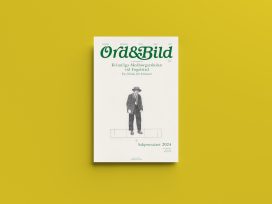Margaret R. Higonnet’s co-edited volume, Behind the Lines: Gender and the Two World Wars, published in 1987, has been essential for historiographical debates on women’s and gender history of the First World War. With contributions by leading international feminist historians such as Joan W. Scott, Michelle Perrot and Karin Hausen, the volume discusses in depth the need to reconceptualize the effects of these two totalized wars on the relations between women and men. Did war really trigger fundamental changes in these relations or the gender order, and help emancipate women, as often claimed? Margaret and Patrice L.-R. Higonnet’s introduction uses the image of the ‘double helix’, with its ‘structure of two intertwined strands’, to deconstruct such an assumption, suggesting a more differentiated view. The two argue that ‘the changes in women’s activities during wartime did not improve their status’ as ‘the female strand on the helix is opposed to the male strand, and position on the female strand is subordinate to position on the male strand’. In recent decades, the concept of the ‘double helix’ has become extremely influential in the field of women’s and gender history of World War One and its aftermath, and is still much cited.
Christa Hämmerle: ‘When is change not change?’ reads the first sentence of your introductory chapter in Behind the Lines. Gender and the Two World Wars (1987). Drawing on the case studies of the volume, this initial sentence questioned the traditional assumption that these wars radically changed women’s social and economic positions. How persistent is this view? In which historiographical contexts do you think such a pattern still plays an important role?
Margaret R. Higonnet: The problem of the relationship between wars and social change is complicated: today, historians recognize that the world wars’ impacts on gender varied across national wartime experiences and cultures. Historiographically, one context is the distinction between short-term and long-term change. The rise of diverse women’s movements before 1914 fostered women’s embrace of new roles during World War One, as well as their ability to sustain political consciousness following the war. The war became a platform on which those social changes would be performed; simultaneously, new wartime activities such as participation in an ambulance corps, replacing a conscripted mayor or serving in local Russian parliaments, for example, generated new identities, and the deaths of men gave some women new responsibilities over the long term. Historians’ early assumption that the two world wars improved women’s social and economic positions over the long run, however, was implicitly optimistic, rather like the Pollyanna-ish observation that the ‘Great War’ led to improvements in plastic surgery (setting aside the mutilations that occasioned such medical innovations). Today’s views are more nuanced, and the historiography of gender in both wars has become more egalitarian, changing the stories told in schoolbooks to include civilian as well as military experiences. Instead of the scandalous ‘emancipation’ of mannish young women, the focus has shifted to the daily life of people often considered marginal to war or politics.
During World War One, governments advocated women’s short-term employment as substitutes for men mobilized to fight. After the war, however, demobilization drove hundreds of thousands of women out of their jobs, redirecting many to domestic labour, agriculture and service professions. In the long term, wars are destructive not only to soldiers in the military but to civilian life, where unanticipated economic costs impede post-war socio-economic redevelopment. The First World War thus unleashed vast movements of refugees on the Eastern Front, many of whom simply disappeared; it destroyed cities and villages, leaving unexploded munitions in the fields and ‘red zones’ in northeastern France that cannot be cultivated even in the twenty-first century. Encyclopedic studies of violence during two total wars of the twentieth century have amplified our knowledge of casualties and civilian deaths. Susan Grayzel’s textbook, after presenting analyses of women’s images, war work, sexuality and ‘gender disruption’, concludes, ‘it is difficult to evaluate the extent to which the political, social and cultural conditions of the immediate postwar years … were due to the war. There may be no simple explanation for any of them.’ The evidence for or against progress for women from 1919 onwards is contradictory and varies across classes and ethnicity as well as across nations.
The most striking long-term advance for women in this period was access to the vote, and this too was achieved through sustained political demands starting before 1914. In addition to states such as Finland (1906) or New Zealand (1910) that granted women suffrage before or during the war, a dozen more countries from 1917 onwards introduced it as well. But this did not happen in all post-war countries. Generally, women have not achieved equal status even today, and paternalist laws specifically governing women’s bodies, maternity, sexuality, dress, and access to health care continue to hamper their civic equality a century later.

Two members of the Women’s Army Auxiliary Corps, France, during World War I. Source: National Library of Scotland on Flickr
The concept of the ‘double helix’ helped explain why war-related shifts, e.g. in the field of industrial work on the home front, were largely temporary or resulted in a backlash after the war. The construction of the front/home front dichotomy was strongly advocated by state authorities and (male as well as female) agents of war propaganda. In turn, new self-perceptions may have arisen for some women post-suffrage. How do you judge the utility of the concept today, after more than thirty years of women’s and gender history of the Great War?
The recent translation into Hungarian of our essay ‘The Double Helix’ suggests that the questions raised persist, although more complex paradigms have also been proposed in the past thirty years. The volume ‘Behind the Lines’ addressed the paradox that the two world wars brought dramatic, but temporary, state-supported changes in social roles for both men and women. The simple metaphor of a ‘double helix’ aimed to make visible persistent social and gender hierarchies, not to support them. On the individual level, of course, new self-perceptions of both men and women became manifest after 1918 in many memoirs and other modes of self-expression. These new identities for women often stood in tension with the social conditions to which women returned after volunteering for wartime service (and even serving in the military in a few countries). Although the sexual division of labour changed temporarily in both wars, the three-volume Cambridge History of the First World War echoes our aphorism that ‘the more things change, the more they remain the same’. Editors John Horne and Jay Winter point out that World War One exacerbated the dichotomy between masculinity and femininity, while it also realigned these concepts: wartime exigencies assigned some feminine roles to men (e.g. as male nurses, orderlies or cooks) and masculine roles to women. Metaphorically militarized, the home front nonetheless remained highly gendered and ultimately left women on the sidelines. Lower status and pay were common for women replacing men in civilian and military positions.
A second, related puzzle faced by the contributors to the volume Behind the Lines was the disparity in post-war experiences for men and women from nation to nation. Demobilization of men with injuries complicated post-war images of militarized masculinity as well as the ostensible restoration of ‘normal’ labour and social relations. While some women won the vote, others, including those young English and French women who had worked in munitions, did not. Were those differences framed by local experiences of defeat or victory, revolution, economic crises and specific cultural values? Post-war reconstruction of civil society returned most women to earlier disadvantages in the workplace. On the positive side, the International Labour Organization established by the Treaty of Versailles under Albert Thomas proposed protection for women workers before and after childbirth and prohibited unhealthy work by women and children. Thomas believed that it ‘was the war’ that would force governments to ‘abolish’ poverty, injustice and privations. Rather than war, changing views of human rights and individualism may have been responsible for such efforts.
Through studies of veterans’ associations, we know more about the post-war consciousness of male veterans than about that of women. Accounts of individual women’s experiences of active participation as recorded in diaries and memoirs need to be compared with the group consciousness shared among ‘veteran’ ambulance drivers and nurses as well as with other associations that failed to build group consciousness through commemorative events. Because of the archives created at the Imperial War Museum in London, the British have done unusual work gathering evidence about women’s veterans groups, their wartime work for auxiliaries, their post-war memoirs and return to war-work during the Second World War. British oral histories have also contributed to our understanding of women’s changing self-consciousness. For France, Mary Louise Roberts takes a broad perspective on renewed social conservatism (and critique of the ‘flapper’ figure) that identified social ‘decay’ with issues such as the fall of the franc; she interprets the critique of gender changes as a way to mask political and economic changes. But many questions remain open: did the ‘double burden’ carried by women who were mothers foster a slippage from public activity back into a more highly gendered private sphere? Did the discursive distinction between public economic production, encoded by politicians and unions as a masculine terrain, and private reproduction, a feminine terrain, reinforce a sense of wartime crisis and foster post-war antifeminism?
What did you mean by your call to both analyze the ‘double helix’ and to break out of it? You stated that we ‘need to move beyond binary models of analysis’ and to hear ‘the polyphony of historical experience’. How would you respond to critics who see the model of the ‘double helix’ as focused exclusively on the social and ideological or discursive structures of the hegemonic gender order? Did the model underestimate experiences or agencies on the one hand, and ambivalences or ambiguities as well as war-related ‘gender troubles’ on the other? What models might fit current women’s and gender history of World War One?
To recognize a social pattern may enable us to break out of it. One of the most significant changes over the last century has been the ‘troubling’ of the concept of gender, as Judith Butler put it, both through new scientific understanding of genetics and through queer theory. Other factors such as the widespread access to contraception have also altered perceptions of biological determinants, as has the shift to remotely controlled means of warfare. Such developments demand interdisciplinary as well as multi-cultural approaches to gender today. To reinterpret men’s and women’s wartime experiences one hundred years ago depends on recognizing the intersectionality and malleability of their identities. Individuals speak in more than a single voice both in the moment and over time. Agency always lurked beneath a semblance of civilian passivity, a fact overlooked in the discursive binaries of earlier historians.
Among many reasons for such invisibility were probably censorship or self-censorship and the delay in autobiographical publications about the war, especially in the case of women’s stories. Historiographic changes inspired by the Annales school, by the linguistic turn and by feminists have brought to the foreground a significant new body of texts for us to study, including forgotten diaries, fiction from ‘minor’ literatures and unpublished manuscripts such as a memoir by Margaret Hall accompanied by her stunning photographs of the war zone. Agents of change since the 1980s include historians like Françoise Thébaud and literary critics like Claire Tylee. Your own work on mostly unpublished or self-published war accounts of Austro-Hungarian nurses has foregrounded Marianne Jarka, who wrote her autobiography at the age of 72, explaining that in her post-war poverty, she traded her medals for milk since her war experience ‘no longer counted’. Such individual records or autobiographical narratives help deconstruct the rigid gendered dichotomy between private and public spheres and can help us see the shifting perceptions of war experience over the decades.
The binary of male/female continues to be widely mobilized in political discourse, especially for militarist aggression, even as that binary is increasingly contested in issues like the military acceptance of transgender soldiers. Looking back today, despite significant economic and political shifts, we find some problems continue to plague women: disparity in wages, limited access to certain professions, the glass ceiling and the harassment to which the ‘MeToo’ movement responds are continuing features of civil society. The functioning of gender in military recruitment and advancement has become more manifestly complex. In most national armies that now employ women in combat roles, however, they do not in practice serve in front lines, in part because war itself has been digitized and robotized.
Since 1989, the history of masculinities has developed as well. Relevant studies of the First World War show that men’s roles and experiences in general, and of soldiers in particular, were also quite diverse, for example in the sense that some groups of men were ‘feminized’ or marginalized – although the concept of militarized masculinity was hegemonic. How do such dimensions fit into the model of the ‘double helix’?
One way to apply the metaphor to relationships among men would be to recognize the subordination of minority men as analogous to the subordination of women. In today’s more diverse landscape, the relationship of men to power structures in the military continues to be complicated by race and sexuality. Like the women who hoped to gain full citizenship and the vote by volunteering, so too Senegalese fighters and African Americans hoped to gain full citizenship rights and equality with white men in France or the USA. During World War One, while racial stereotypes persisted, military honours could be won. In the post-war demobilization, however, inequality in pension rights ruled. Moreover, false accusations of rape were lodged against African troops in the Rhineland. Similarly, African American soldiers were among the last to be sent home, after serving on burial crews; then, on their return to the USA, they faced lynch mobs. Mulk Raj Anand in his novel Across the Black Waters (1939) observed the official limits on heterosexual encounters across racial lines imposed by the British military.
Rich scholarship has developed around homosexuality as well. A brilliant exploration of soldiers’ shifting norms of masculinity, conventional gender roles and sexuality was offered a few years ago by Santanu Das. Tellingly, his investigation of tactile contacts in the trenches across a continuum of relationships identifies a ‘double bind’ in which the intensity of bonds was in tension with the brevity of physical bonding. The peculiar conditions of wartime enabled such developments and reconfigurations of masculinity in quasi-maternal roles, while also setting limits to their postwar continuation. At the individual level, the facial mutilation of soldiers and their loss of limbs deprived many of their former professions and social status; likewise, the impact of shell shock often meant a post-war continuation of changes in the experience of gender. Another example of gender blurring is explored by Das in the case of sepoys’ laments recorded by German anthropologists on wax discs at the Wünsdorf P.O.W. camp. Some of these stemmed from women’s oral laments, in what Claudia Siebrecht calls ‘the moral economy of grief’. The soldier stripped of his combatant status as a prisoner of war was feminized by his captivity and traditional models of lament. So were conscientious objectors, some of whom undertook nursing (an ambiguously gendered role), while others were imprisoned. That demotion in status was not redeemed by national victory and a return to ‘gender normalcy’ after the war.
One last question concerning the ‘double helix’: you made very clear that the concept should only be applied to total wars, i.e. the two world wars of the twentieth century. Why not use it to analyze other historical wars, such as the Napoleonic wars or armed conflicts today in which female soldiers fight as well? Which criteria do you believe should be present in an armed conflict for historians to analyze it fruitfully using the ‘double helix’ model?
Recent historians have begun to trace these topics back to antiquity, and their findings have been anchored in historical contexts. Some evidence indicates that more dramatic shifts in gender assignments may take place in civil wars, revolutions and conflicts on mobile fronts. By contrast, well-disciplined military forces on stable fronts resist the emergence of female leaders even when women are soldiers. Work by Djamila Amrane traces similar patterns of temporary change in the Algerian war. Amrane and others who have worked on revolutionary movements in Africa have found that the mobilization of women in rebellion against colonial rulers was largely followed by the subsequent disappearance of many of those combatants from political view.
Where firm military control and other institutional structures shape nursing, auxiliary services and other combat-related activities, women take on new roles within limits, whereas in regions where military and governmental structures are more permeable, blurred lines of authority allow women greater autonomy. Modern revolutions obscure the formal outlines of ‘war’ itself.
You use the term ‘trauma’ in your works and elaborate ‘traces’ of traumatization in (female) war experiences on the level of language as well as representation. Can you expand on this and look back at how research on war traumas has developed? You have also addressed the topics of war nurses and women who were stationed in frontline areas during World War One. What prompted you to do research on these many thousands of women?
Trauma, of course, means injury, although it took on the more specific meaning of mental trauma over the twentieth century, especially following the work of the psychologist Robert J. Lifton with veterans of the American war in Vietnam, when it became known as post-traumatic stress disorder (PTSD). In Paris following the Franco-Prussian war, Jean-Martin Charcot (whom Freud worked with) already argued that ‘hysteria’, thought to be a female disease, could be a neurological symptom among men following sudden accidents or war injuries. During World War One, several terms were applied to PTSD, such as ‘war neurosis’, ‘soldier’s heart’ or ‘shell shock’. Considered malingerers, many patients were treated with electric shock or other punishments. The key triggers of war trauma, according to John MacCurdy, were extreme fatigue and stress, a soldier’s sense of impotence when confined in a trench, the sight or direct touch of ‘the mangled remains of his comrades’ and sudden horror. W. H. R. Rivers was an early medical expert to implement a form of ‘talking cure’. Although it was recognized that soldiers might experience trauma without having been under attack by explosives, the phenomenon was explored by historians in the case of men rather than among women who served close to the frontlines or on hospital ships. Even feminists such as Elaine Showalter have linked trauma to a ‘crisis of masculinity’ during the war.
In his post-war review of statistics for long-term repercussions of ‘war neurosis’, the American doctor Norman Fenton found elevated rates among the medical corps. He speculated this might be due to medical staff witnessing ‘terrible sights of mutilation and disease both at the front and in hospitals behind the lines’. Fenton’s findings opened the possibility that not only men in the medical corps, but also women nursing close to the front might undergo traumatizing experiences, and this is what drew me to the topic. For a literary critic like myself, ruptures in texts about trauma offer an interesting connection to Modernism, in which gaps or silences testify to what Walter Benjamin calls a loss of ‘communicable experience’. This approach led me to new ways of reading nursing texts.
Let us finally turn to the centenary or to what has changed in our understanding of the First World War in recent years. You ended your article of 1987 with the hope that ‘words and actions which in a previous historiography had seemed marginal now move to the center of the stage’. Do you believe that women’s and gender history approaches have moved from their marginal position to centre stage within First World War research?
In addition to the troubling of binary gender stereotypes, one of the most important changes in historiography bearing on the ‘double helix’ thesis has been the extensive shift in perception of the chronology of World War One, with a shift of attention from strictly military matters to civil society, and from the politically defined event to the longue durée. At the centenary, many conferences have focused on the period from 1917 to 1923 when new configurations of states and identities impelled political struggles over economic reconstruction and social organization. Works like Leila Fawaz’s study A Land of Aching Hearts develop our understanding of neglected fronts and regional conflicts as parts of larger and longer patterns of disruption, and draw on oral culture as well as official documents to expand our understanding to include illiterate women and men and place them under our spotlight. Comparative work complicates conclusions about gender, as in the experiences of Chinese women at the formation of the People’s Republic of China, when traditional domestic structures were overthrown. The centenary has also focused on a collective memory that stretches across gender and generations. The war culture addressed to children has become a fertile field of exploration, with interdisciplinary connections to pedagogy, propaganda and the study of creative word-image collaborations. Here too, the construction of gender is of central interest, and the time frame naturally is the longue durée. As the scale of analysis changes, with closer attention both to intimate relations and to the transmission of trauma across generations, we discover new ways to understand the complex history of gender amidst socially generated practices of violence.







